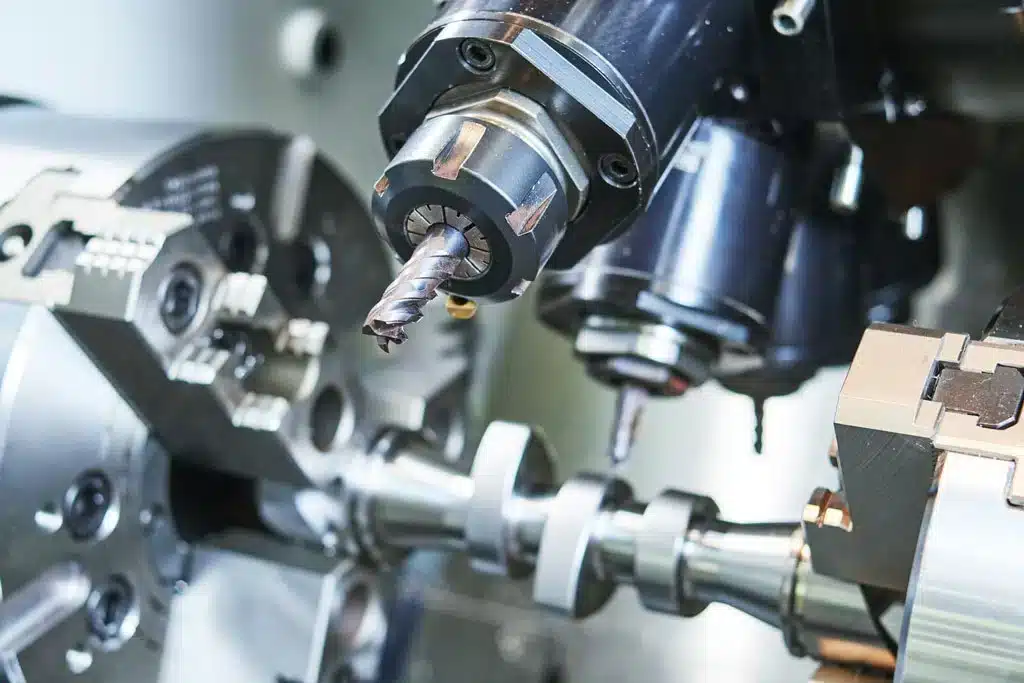Meta Description: What are the benefits of multiaxis machining, used and types of multiaxis machining, including cutting tool movement . Full explanation of 4-axis and 5-axis CNC machining solutions that are applicable in aerospace, medical as well as manufacturing industries. Professional predictions 2025.
Multi-axis machining is a game-changing innovation in computer numerical control (CNC) machines that have transformed the production process in the manufacturing industry in all countries of the world, leading to enhanced precision . In contrast to the conventional 3-axis machines that occupy X, Y, and Z planes, the multi-axis systems have extra and rotary axes that have allowed them to achieve precision, complexity, and efficiency never been realized in the production of parts.
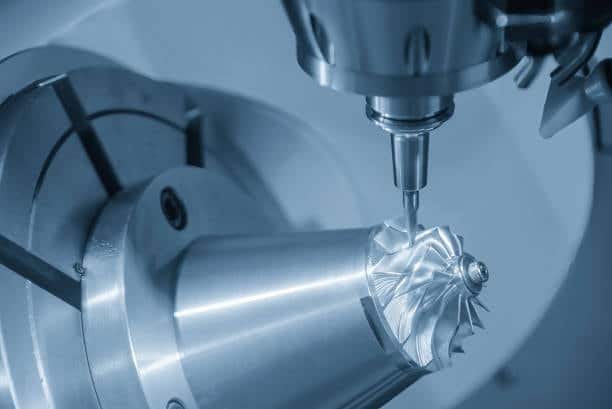
The international manufacturing environment is rapidly becoming more geometries on components that would increase their surface finishing and tighter tolerances requirements. The multi-axis machining technology incorporates these needs and shortens the surface machining manufacturing cycle of the same, reducing the need for multiple setups although these are minimally handled by people and the total manufacturing capacity is promoted. As we move closer into 2025, with the implementation of artificial intelligence and smart manufacturing systems, the functions of multi-axes CNC machines keep improving, significantly impacting manufacturing processes .

Multi-axis machining needs to be understood by manufacturers, engineers and business associations that want to streamline their production process and achieve high precision compared to traditional machining methods. The given guide can help understand the ground theory of the multi-axis machining technology, its advantages, implementation methods, and future tendencies that can be relevant to newcomers and the professionals of various fields in the manufacturing industry that may lack such information.
Understanding the Fundamentals of Multi-Axis Machining Technology
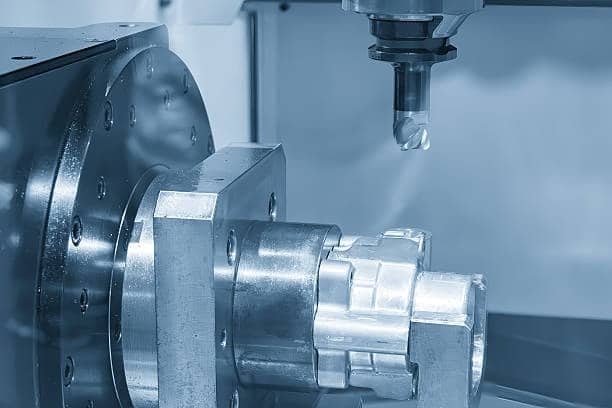
Multi-axe machining however goes further than the three axis method of machining to involve more rotary axis movements enabling the cutting tools to cut the workpieces with multiple angles simultaneously. The fundamental three axes are X (left-right), Y (forward-backward), and Z (up-down), while the three rotary axes enter into rotational motions around these basic movements.
The 4-axis and 5-axis are the most popular multi-axis machineries. A 4-axis machine will generally include rotation about the X-axis (A-axis) or Y-axis (B-axis), allowing machining of cylindrical surfaces or that are curved surfaces more accurately. A five-axis machine adds two more axis of rotation typically X-axis and Z-axis (however, any multiple axes can be viewed as rotational), which enhances the mass production capabilities by giving the tool the freedom to move anywhere around the part in three-dimensional space.
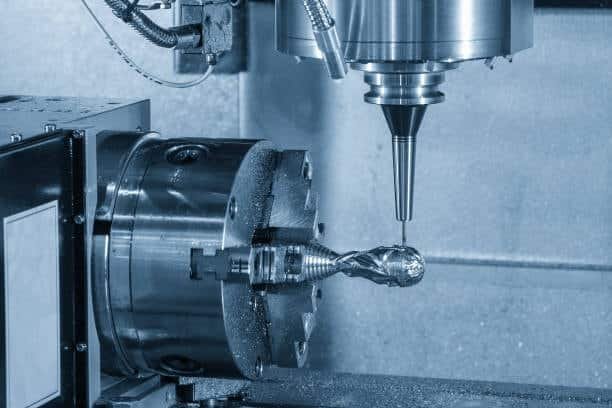
What is more advanced in multi-axis systems is that all the time during the working of the machine, the best cutting conditions are maintained. These machines allow higher surface finish and a decrease in cutting force and tool wear, and this is by continually varying the orientation of the cutting tool with regard to the workpiece surface. This is useful in the production of intricate 3D designs which would have been impractical or extremely laborious when operating on a 3-axis machine.
The latest multi-axis machines adopt a high technology computer aided manufacturing (CAM) program that produces toolpath that optimizes the machine movements. Such systems look into issues of tool access, collision avoidance and surface quality requirements so that effective machining programs which capture the advantages of multi-axis technology are established.
Types and Configurations of Multi-Axis CNC Machines
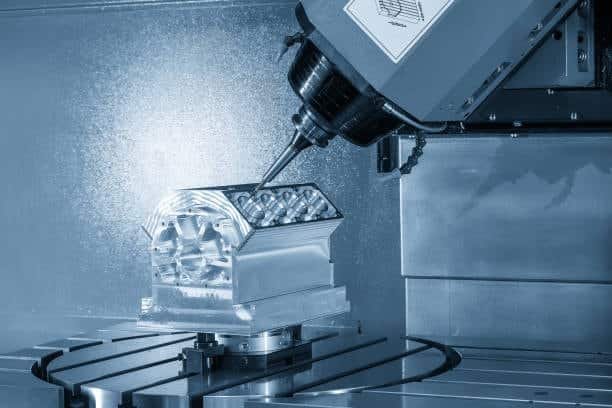
Multi-axis machine classification is based on their mechanical design and the configuration of their axes. Appreciation of these variations assists manufacturers and mechanical engineering professional to make the right choices when it comes to equipment selection especially in different levels of application and production needs.
The axis of the 4-Axis Machines will have either a vertical or horizontal spindle and the fourth rotary table or tilting spindle head. The most widespread one consists of rotation of the A-axis around X-axis, with the ability to machine rotational-symmetrical parts. The machines are efficient in manufacturing parts like impellers, turbine blades and mechanical seals where they have to be contoured.
5-Axis Machines have maximum flexibility through two added rotational axes. The most common type is tilting-head and a spindle that rotates and a rotary-table, where the work rotates. The more powerful systems use a combination of both methods in order to be as versatile as possible. Such machines are able to reach virtually any point on a work piece using virtually any direction, which allows for extreme precision machining of surgical tools and very complex parts to be machined in a single set up.
3+2 Axis Machining is a cross between the two forms; in that the machine places the two rotational axes in certain angles before performing the regular 3-axis tasks. This is less dynamically advanced than actual 5-axis machining that is simultaneous but is easier to gain access to and has a better surface finish than direct 3-axis machining combined with the ease of programming.
Simultaneous 5-Axis Machining implies non-interrupted movement of all five axes in the course of cutting. This is the method which gives smoothest of surface finishes and can machine the most intricate geometries including undercuts and deep holes, showcasing precision machining capabilities which would not be possible by any other method.
All machine setups have some uniqueness in terms of advantages based on the application needs, complexity of parts, quantity of parts needed to be produced and cost limitation. Some of the factors to be incorporated during the selecting process include the part geometry, material properties, tolerance preconditions as well as the long term manufacturing objectives.
Key Advantages and Benefits of Multi-Axis Machining
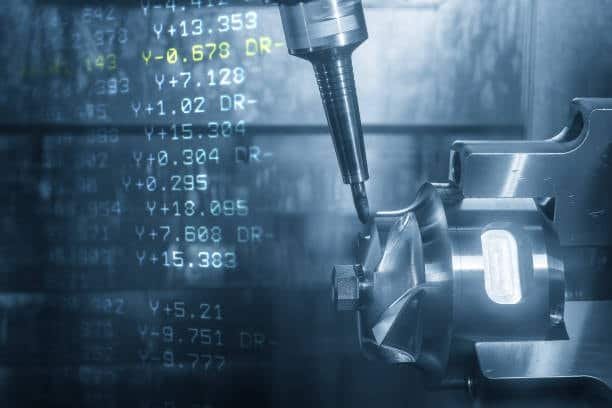
Multi-axis machining is associated with a lot of benefits that have major effects on the efficiency of manufacturing, quality of manufactured parts and the overall cost of production. Multi axis CNC machines are more accurate and enables them to produce finer and more accurate parts that are well parted and would be hard or rather impossible to obtain a 3 axis machine shop. These advantages are not limited to a mere technological advance but they continue to be an addition to the business as a whole.
Improved accuracy and finish best characterize one of the greatest advantages of multi-axis technology. Successful surface finishes and dimensional accuracy are largely associated with the capability of ensuring optimal orientation of shorter cutting tools at all times during the machining process. This ability gives it the ability to do away with much of the secondary finishing processes, making the whole process of production much faster and cheaper all the time enhancing the quality and consistency of the parts produced.
Less Setup Time and Higher Efficiency is due to complexity of parts that can be produced by multi-axis machine in a lone setup that would otherwise require numerous operations on various machines. This decrease in part handling will diminish the possibility of error, and the efficiency with which machines operated will utilize less labor, and will to a great extent cut down on the cycle times of involved parts.
Complex Geometry Capabilities determine the properties of very complex three dimensional geometry manufactured parts undercuts and internal geometry features would not be possible or cost prohibitive to manufacture under traditional machining practices. The new design potential creates the ability to simplify the process and consolidate parts and decrease assembly needs bringing a greater overall product performance.
Better Tool Life and Cutting Force Reduction follow the capability of having cool cutting conditions during the whole machining time. The multi-axis machine minimizes tool wear and increases cutting tool life by orienting tools so that optimum cutting angles can be maintained resulting in decreased tool cost and increased productivity.
The Flexibility and Adaptability is enhanced and enable manufacturers to react promptly to customer demands and market needs. Multi-axis machines are versatile and do not require much modification to deal with a diverse range of complex parts geometries and materials, making them particularly valuable in the automotive industry and therefore are suitable in the context of both prototype development and production.
Industrial Applications Across Manufacturing Sectors
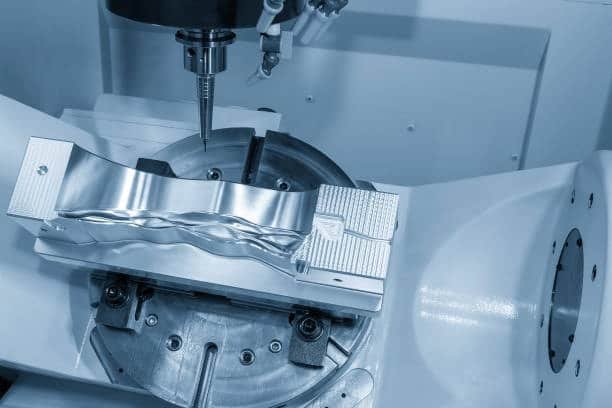
The multi-axis machining technology is used in different industries and where precision, complexity, and efficiency are of significant importance. Such systems are very versatile and thus inessential in the vertical machining applications where high quality components are needed with complex geometries in place.
One of the biggest markets of multi-axis machining technology would be Aerospace Industry. Aircraft: aircraft parts are fabricated with multi-axis CNC machining to include turbine blades, engine components, structural elements and complex bracketries. Aerospace industry requires the posting of parts that are exceptionally strong but equally light, precise tolerance levels, intricate geometry which can only be attained by innovative multi axis machining.
The medical manufacturing industry especially the medical device manufactures, majorly depends on multi axis to fabricate surgical devices, implants and prosthetic parts. The biomedical sector demands that the surface finish be smooth, the materials be biocompatible and that the geometry is patient specific, allowing for the production of complex parts and most of these qualities are ideal to the multi-axis machining capabilities.
Automotive Industry makes use of multi-axis machines to make engine parts, transmission part, and chassis component. The car manufacturing industry has found the technology helpful in manufacturing light but sturdy parts that can be produced with cnc lathes, which will enhance fuel consumption and performance.
Power Generation Applications consist of turbine, wind generation power/Energy Sector Applications and oil and gas prospecting equipment, bushings, and nuclear reactor parts. These applications also involve extreme durability, precision, and reliability which will be attained in applications involving the c axis of multi axis machining.
Tool and Die Manufacturing uses multi-axis manufacturing capability (multi-axis CNC machining centres) to produce the complex molds, dies, and cutting tools with complex cooling channels and tight surface finish simply not possible with single axis machines (2-axes CNC machining). Multi-axis systems have become very useful in this industry because of the capability of producing intricate internal geometries using machines.
Multi-axis machining of precision components found their applications in Electronics and Technology sectors where ultra-small size and accuracy of products is an important requirement of smartphones, computers and other advanced electronics products.
Programming and Software Considerations for Multi-Axis Operations
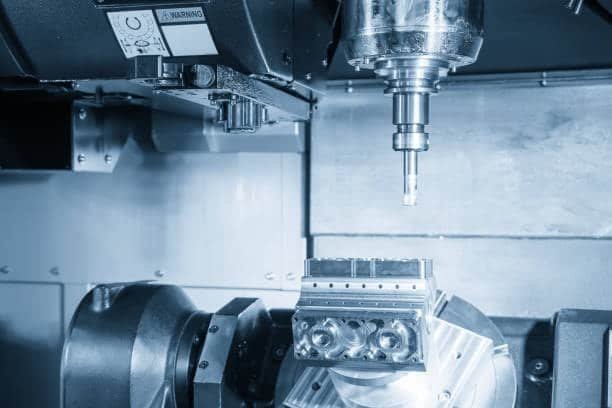
Multi-axis machining is a complex task that demands the application of advanced forms of programming and smart software products that can fulfill the functionality of the machine and simultaneously maintain the efficient and safe operations. Such challenges have led to development of modern CAM software that recognizes such shortcomings by implementing intelligence in the toolpath generation as well as the collision avoidance system.
Multi-axis programming is based on a Computer-Aided Manufacturing (CAM) Software that is used to transfer the information on the parts design into the computer-readable code. In the case of advanced CAM systems, advanced algorithms are used to optimizes toolpaths on multi-axis machines in terms of surface quality, machining time, and tool accessibility. These systems auto-program complicated toolpaths that could not be programmed by humans.
Collision Detection and Avoidance is a serious part of the multi-axis programming since the movement of machines has become more complex. Using virtual machine models, modern software systems help in simulating machining processes, which allow detecting simulated potential collisions between the cutting tool, spindle, the workpiece and machine parts and elements resulting in real machining operations.
Post-Processing and Machine-Specific Code Generation is the process whereby generic toolpaths is converted to machine-specific G-code that takes into consideration machine-specific parameters, kinematics and control system considerations. Adequate after treatment will guarantee maximum machine efficiency and eliminate over-programming mistakes that may result in damages to equipment or manufacture of faulty products.
Simulation and Verification Systems are the virtual environments in which programmers may test and improve the machining programs prior to executing it on real machines. They assist in finding a possible problem, cut parameter optimization, and part quality prior to producing physical parts.
The approaches used in Programming Strategies of multi-axis operations are frequently hybrid programs of 3-axis, 3+2 axis and simultaneous 5-axis operations. This is flexibility gives the freedom to the programmers to optimize each machining operation depending on part geometry, tolerance, and surface finishations..
Material Compatibility and Machining Considerations
The multi-axis machining technology has proven to be very versatile in machining several types of material including general metals as well as exotic alloys and more advanced composites. It is important to understand ideally, machining parameters are material-specific concerns because desired results are obtained through effective machining parameters.
The greatest number of materials processed by a multi-axis machine are Metals and Alloys. Multi-axis technology is very useful to the alloy of aluminum because they work-harden when conventionally machined. The capability of sustaining ideal cutting conditions lessens heat production and enhances the final finish. Ti alloys, which are frequently involved into aerospace, need attention to the controlling temperature and the adjustment of cutting parameters which can be offered by multi-axis machines due to better control of the tool orientation.
Hardened Materials and Stainless Steel manufacturer feature special problems regarding their machining, which can be overcome with the assistance of multi-axis technology. Keeping the correct cutting angles and automatically changing feed rates can enable the successful machining of such hard-to-cut materials more efficiently at increased tool life and part quality.
Completely new materials such as Composite Materials and Advanced Ceramics need special methods that only multi-axis machines will be able to fulfill. The near-exact abilities to control the cutting forces and tool orientation greatly aid to guard against delamination at composites and minimize the chance to carry out a thermal damage on ceramic products.
The use of reduced cutting forces and enhanced heat dissipation that can be achieved as a result of multi-axis machining is beneficial to Plastic and Polymer Materials. Precision plastic parts involved in medical and electronic systems are perfect for mass production as the technology allows the minimization of part distortion.
Inconel and Hastelloy, Exotic and Superalloys, use in high-temperature processes depend on the ability to closely control the machine, something that multi-axis machines can do. The main factors that have to be met to be able to process these difficult materials involve the capability to optimize the conditions of cutting during the process of the machining.
Programming Material Specifics consist of considerations such as optimizing the cutting speed, coolant delivery approaches and tool choice criteria that all have a significant difference between the materials. Multi-axis CAM software has included the material databases to optimize tool paths , which enable the automated modification of machining parameters, depending on material properties and the needs of parts.
Future Trends and Technological Advancements
The multi-axis machining sector still develops fast through innovations of automation, artificial intelligence and integration technologies of manufacturing. CloudNC, a manufacturing technology company supported by Autodesk has announced the latest development in its CAM Assist product that optimizes spindle speed simultaneous movement. The above developments have the potential to maximize the potential and availability of multi-axis technology.
Artificial Intelligence Integration is transforming multi-axis machining by making toolpath schemes, intelligent, predictive maintenance and adaptive machining strategies. AI systems could be capable of processing the condition of machining in real-time, and automatically make any adjustments to improve the surface finish, tool life and cycle time.
Industry 4.0 Connectivity allows multi axis machines to become directly connected to factory-wide manufacturing execution systems (MES) and enterprise resource planning (ERP) systems. This connectivity gives the ability to monitor the production in real-time, track the quality and enable the automated scheduling, which enhances the efficiency of the complete manufacturing process cnc control panel.
Advanced Control Systems are systems that use machine learning algorithms that enable machining performance to continually improve with historical monitoring and real-time input. Such systems are able to define optimum cutting conditions of new materials and shapes having the added advantage of lower set up time and higher first-part quality achievement cnc controller.
Hybrid Manufacturing Technologies -HMTs integrate model-based machining with additive manufacturing strategies to generate systems that can construct and refresh parts at the same machine place. This fusion allows innovative manufacturing plans to take advantage of the positive attributes of the two technologies.
Robotics and automation of the multi-axes increases with the Robotics Integrations with automatically loading of parts, tool changing, and quality checks. Such advances lower the need in labor and allow effective lights-out production to be used in the right role.
The Sustainable Manufacturing Initiatives have been promoting the production of more energy-efficient multi-axs machines that have more efficient recycling coolants systems and little effect on the environment. Such developments conform to the international sustainability agenda but they are still efficient in manufacturing.
บทสรุป
The use of multi-axis machining technique is seen as a revolutionary trend in contemporary manufacturing, as it has made production of intricate, high precision parts feasible that were either non-existent or cost uneconomical. The capacity of the technology to conflagrate respective operations in to single setup and surpassing the finest surface finish and precision of measurements makes it inseparable in numerous fields including from the aerospace industry to the medical equipment multiaxis cnc machines.
Further development of the multi-axis technology based on the artificial intelligence, automation, and incorporation of Industry 4.0 is yet to bring even more opportunities and accessibility in the future. The more and the more complex is the trail that must be followed and the precision that should be met in a manufacturing operation, the greater will be the role of the multi-axis machining in the whole picture of addressing the demands of the industry with competitive production values and delivery dates z axes

